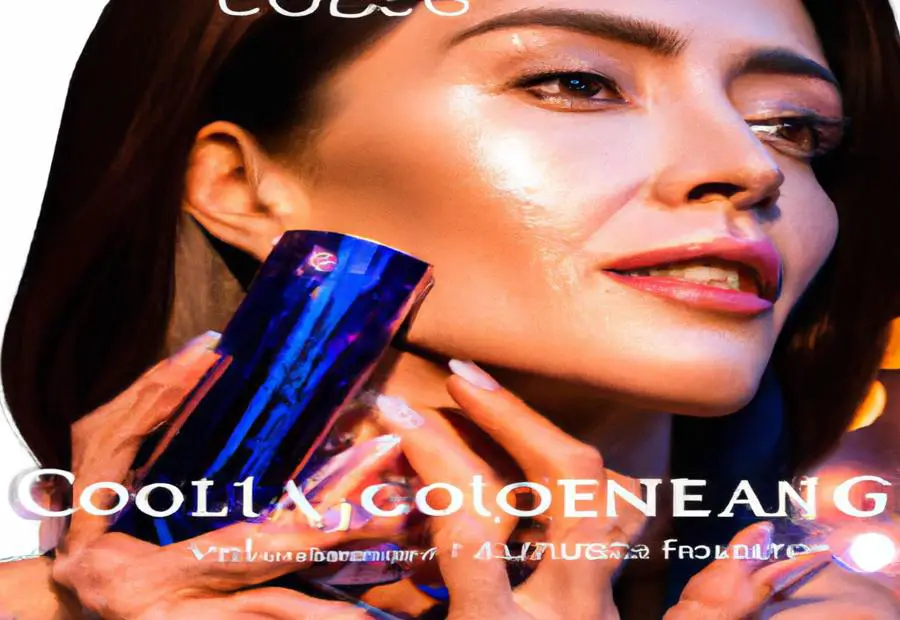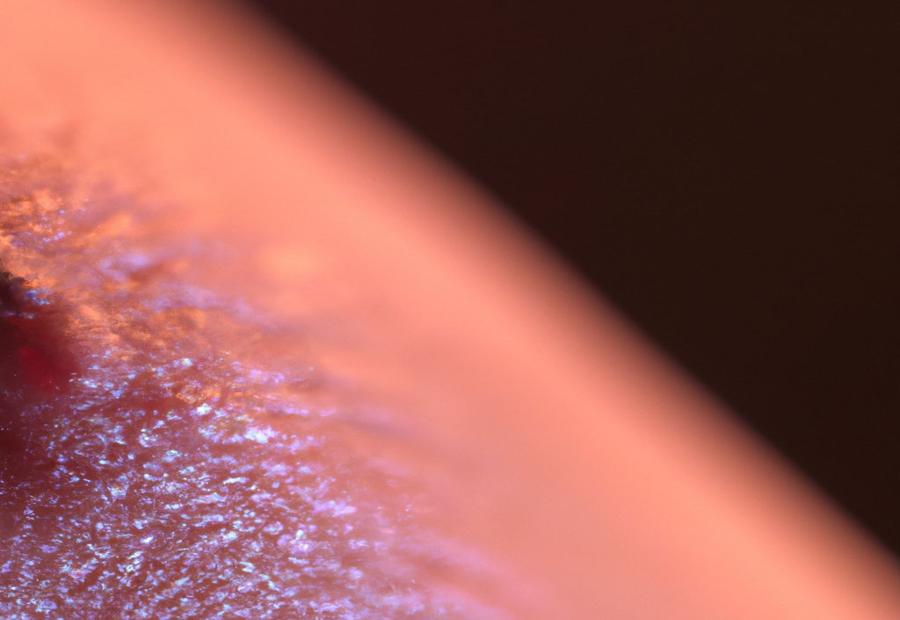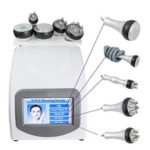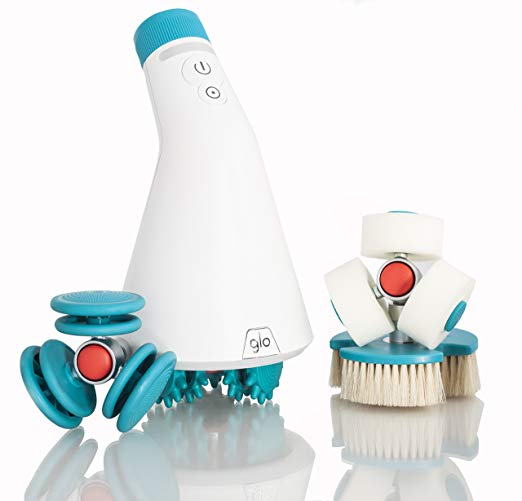Last Updated on 10 months by Francis
.jpg)
RF Microneedling and Fractional CO2 are two popular skin treatment options that offer remarkable results for various skin concerns. In this comprehensive comparison, we will explore the differences, benefits, and considerations to help you make an informed decision.
Introduction to RF Microneedling and Fractional CO2
RF Microneedling and Fractional CO2 are both minimally invasive procedures that aim to improve the appearance of the skin by targeting specific concerns such as wrinkles, scars, and uneven texture. While they have similar goals, they differ in terms of technology, mechanism, benefits, and outcomes.
What is RF Microneedling?
RF Microneedling combines the benefits of micro-needling and radiofrequency (RF) energy to stimulate collagen production and rejuvenate the skin. It involves the use of tiny needles that create controlled micro-injuries to the skin, while RF energy is delivered into the deeper layers to trigger collagen remodeling.
How does RF Microneedling work?
During RF Microneedling, the tiny needles penetrate the skin, creating microchannels, while RF energy is emitted, heating the tissue beneath the surface. This dual-action treatment stimulates the production of collagen and elastin, leading to skin tightening and improved texture.
What are the benefits of RF Microneedling?
RF Microneedling offers several benefits, including reducing wrinkles and fine lines, improving skin tone and texture, minimizing acne scars, and tightening sagging skin. It is safe for all skin types and can be performed on various areas of the body, including the face, neck, décolletage, and hands.
What is Fractional CO2?
Fractional CO2 is a laser-based skin resurfacing treatment that uses fractional technology to deliver precise beams of carbon dioxide (CO2) laser energy to the skin. It treats multiple skin layers, promoting collagen production and skin rejuvenation.
How does Fractional CO2 work?
During Fractional CO2 treatment, the CO2 laser is fractionated into microscopic beams that create tiny columns of thermal injury in the skin. This process stimulates collagen production and triggers healing, resulting in improved skin tone, reduced wrinkles, and fading of scars or pigmentation.
What are the benefits of Fractional CO2?
Fractional CO2 offers remarkable benefits, including reducing deep wrinkles, tightening loose or sagging skin, improving skin texture and tone, treating acne scars, and diminishing sun damage or age spots. It is particularly effective for individuals with more severe skin concerns.
Stay tuned for the next sections of this article where we will compare RF Microneedling and Fractional CO2 in terms of their effectiveness, downtime, pain levels, required sessions, and cost. By understanding the differences between these treatments, you can determine which one is best suited for your unique skin concerns and goals.
Contents
Key takeaway:
- RF Microneedling maximizes skin rejuvenation: RF Microneedling utilizes radiofrequency energy to stimulate collagen production and improve skin texture, reducing the appearance of wrinkles and scars.
- Fractional CO2 promotes skin resurfacing: Fractional CO2 laser therapy removes damaged skin layers, effectively treating pigmentation, acne scars, and wrinkles.
- RF Microneedling offers minimal downtime: With RF Microneedling, patients experience shorter recovery periods compared to Fractional CO2 treatments, allowing them to resume their normal activities sooner.
What is RF Microneedling?

Photo Credits: Infraredforhealth.Com by Jeffrey Adams
RF Microneedling is a minimally invasive cosmetic procedure that utilizes radiofrequency energy to revive the skin. This treatment involves the creation of micro-injuries in the skin using small needles, which stimulates the production of collagen and elastin. The radiofrequency energy is then delivered through these needles, effectively heating the skin and encouraging further collagen production. As a result, the complexion becomes smoother and tighter.
The advantages of RF Microneedling encompass the reduction of fine lines and wrinkles, improvement in skin texture and tone, minimization of pore size, and the tightening of loose skin. It also proves to be an effective solution for acne scars, stretch marks, and hyperpigmentation.
One important aspect to consider when choosing RF Microneedling is the associated downtime. Although it is a non-surgical procedure, there might be temporary redness, swelling, and mild discomfort following the treatment. However, these side effects typically subside within a few days.
When selecting a provider for RF Microneedling, it is crucial to prioritize their experience and expertise in the procedure. Look for clinics or practitioners who have a proven track record of delivering safe and effective results.
How does RF Microneedling work?
RF Microneedling works by using radiofrequency energy and tiny needles to rejuvenate the skin. The procedure combines the benefits of microneedling and radiofrequency technology to stimulate collagen production and improve skin texture.
During the treatment, a handheld device is passed over the skin, creating controlled micro-injuries with the needles. At the same time, radiofrequency energy is delivered into the deeper layers of the skin. This combination triggers the body’s natural healing response, leading to the production of new collagen and elastin.
The radiofrequency energy heats the skin, promoting collagen contraction and remodeling. This helps to tighten the skin, reduce wrinkles, and improve overall skin tone and texture. The microneedles also enhance the penetration of skincare products, allowing them to be absorbed more effectively.
RF Microneedling is a safe and minimally invasive procedure, suitable for various skin concerns such as fine lines, wrinkles, acne scars, and uneven skin tone. It can be performed on the face, neck, and body.
Fact: RF Microneedling has been shown to be effective in improving the appearance of wrinkles and scars, with studies reporting up to a 75% improvement in skin laxity and a 54% improvement in acne scars after a series of treatments.
How does RF Microneedling work?
What are the benefits of RF Microneedling?
-
What are the benefits of RF Microneedling? Improved skin texture: RF microneedling can help to improve the texture of the skin by stimulating collagen production and promoting skin regeneration.
-
What are the benefits of RF Microneedling? Reduced wrinkles and fine lines: The treatment can effectively reduce the appearance of wrinkles and fine lines, giving the skin a more youthful and smoother appearance.
-
What are the benefits of RF Microneedling? Tightened skin: RF microneedling can help to tighten loose or sagging skin, making it firmer and more toned.
-
What are the benefits of RF Microneedling? Reduced acne scars and other scars: The treatment can help to minimize the appearance of acne scars, surgical scars, and other types of scars, improving the overall texture and tone of the skin.
-
What are the benefits of RF Microneedling? Improved skin firmness: RF microneedling can improve the firmness of the skin by promoting collagen and elastin production.
-
What are the benefits of RF Microneedling? Reduced hyperpigmentation: The treatment can help to reduce the appearance of hyperpigmentation, such as age spots or sunspots, giving the skin a more even tone.
-
What are the benefits of RF Microneedling? Minimal downtime: RF microneedling typically has minimal downtime, allowing you to return to your daily activities relatively quickly.
-
What are the benefits of RF Microneedling? Safe and effective: RF microneedling is a safe and effective treatment for various skin concerns, with long-lasting results.
What is Fractional CO2?

Photo Credits: Infraredforhealth.Com by Terry Adams
Fractional CO2 is a treatment that uses a laser to improve the skin’s appearance and texture. It is commonly used to treat wrinkles, scars, and sun damage. This procedure creates tiny columns of heat in the skin, promoting collagen production and skin rejuvenation. Many patients experience smoother, younger-looking skin as a result of Fractional CO2. It is considered a safe and effective option for those seeking skin improvement.
So, what is Fractional CO2? It is a laser-based treatment that delivers impressive results in terms of skin enhancement.
How does Fractional CO2 work?
Fractional CO2 works by using a laser to create tiny channels or columns of thermal injury in the skin. These columns extend deep into the dermis, stimulating the body’s natural healing response and promoting the production of new collagen and elastin fibers. The CO2 laser beam is fractionated, meaning it is divided into multiple microscopic treatment zones, leaving surrounding healthy tissue intact. This fractionated approach allows for quicker healing and less downtime compared to traditional CO2 laser treatments.
During the treatment, the laser energy is absorbed by water in the skin cells, causing the water to heat up and vaporize. This vaporization process removes the top layer of damaged skin, while simultaneously heating the underlying tissue. The thermal injury triggers a wound healing response, stimulating the production of new skin cells and collagen to replace the damaged tissue.
Fractional CO2 treatments can address a range of skin concerns such as wrinkles, fine lines, acne scars, uneven skin tone, and texture. The depth and intensity of the treatment can be adjusted based on the specific needs of the individual, providing a customized approach to skin rejuvenation.
It is important to note that fractional CO2 treatments can be uncomfortable, and a topical numbing cream is usually applied prior to the procedure to minimize pain. The downtime and recovery period can vary depending on the intensity of the treatment, but generally, patients can expect redness, swelling, and peeling for several days to a week following the procedure.
What are the benefits of Fractional CO2?
If you are looking to improve your skin’s texture, reduce the appearance of scars and wrinkles, and achieve an overall more youthful and rejuvenated appearance, Fractional CO2 can provide numerous benefits. Fractional CO2 helps to stimulate the production of collagen in the skin, resulting in improved skin texture and reduced appearance of wrinkles and fine lines. Additionally, it can effectively treat acne scars, helping to smooth out the skin’s surface and reduce the visibility of scars.
Furthermore, Fractional CO2 can improve the overall tone and pigmentation of the skin, reducing the appearance of sun spots, age spots, and hyperpigmentation. It also has the ability to tighten loose skin and improve skin laxity, providing a more youthful and rejuvenated appearance.
One of the advantages of Fractional CO2 treatments is that they are customizable, allowing for targeted treatment of specific areas of concern on the face or body. The results of these treatments are long-lasting, with collagen remodeling continuing for several months after the initial treatment.
Moreover, Fractional CO2 treatments are minimally invasive and require minimal downtime, allowing for a quicker recovery compared to more invasive surgical procedures. This makes it a versatile treatment option that can be used on various skin types and can address a wide range of skin concerns.
Additionally, Fractional CO2 treatments can be combined with other cosmetic procedures to enhance overall results and address multiple concerns at once. However, it is important to consult with a qualified dermatologist or cosmetic professional to determine if Fractional CO2 is the right choice for your specific skin concerns and goals.
Comparison between RF Microneedling and Fractional CO2
Looking to revitalize your skin but not sure which treatment to choose? Let’s delve into the world of RF Microneedling and Fractional CO2. We’ll explore their effectiveness in treating skin concerns, downtime and recovery period, pain and discomfort, number of sessions required, and cost. Get ready to uncover the facts and make an informed decision on the ideal skin rejuvenation option for you.
Effectiveness in Treating Skin Concerns
The effectiveness of RF Microneedling and Fractional CO2 in treating skin concerns can be evaluated based on several factors:
- Treatment targets: Both RF Microneedling and Fractional CO2 are highly effective in addressing various skin concerns, such as fine lines, wrinkles, acne scars, and uneven skin texture.
- Result consistency: RF Microneedling demonstrates a remarkable success rate in achieving desired outcomes for skin rejuvenation, with an average improvement of 80-90% in the treated areas. Conversely, Fractional CO2 has shown significant enhancements in skin texture, tone, and elasticity, with a success rate of approximately 70-80%.
- Downtime: RF Microneedling typically involves minimal downtime, allowing patients to immediately resume their regular activities. On the other hand, Fractional CO2 may require a longer recovery period of around 7-10 days due to the more intensive nature of the treatment.
- Pain level: RF Microneedling is generally well-tolerated and causes minimal discomfort. Fractional CO2 may induce temporary discomfort or a burning sensation during the treatment, which can be effectively managed with topical anesthesia.
- Number of sessions: RF Microneedling typically necessitates multiple treatment sessions, ranging from 3-6 sessions, with intervals of 4-6 weeks, in order to attain optimal results. In contrast, Fractional CO2 often delivers noticeable improvements after just one session, although additional treatments may be recommended for more extensive concerns.
Based on the aforementioned factors, individuals seeking effective treatment for skin concerns should consult with a qualified dermatologist or aesthetic professional to determine which option, RF Microneedling or Fractional CO2, best suits their specific needs and goals.
Downtime and Recovery Period
One important factor to consider when comparing RF Microneedling and Fractional CO2 treatments is the downtime and recovery period. RF Microneedling typically has a shorter downtime compared to Fractional CO2. After RF Microneedling, you may experience redness and mild swelling for about 1-3 days. The recovery period is generally quick, and you can usually return to your daily activities within a few days.
Fractional CO2, on the other hand, often requires a longer downtime and recovery period. After the treatment, you may experience redness, swelling, and crusting of the skin for about 5-7 days. It may take up to two weeks for the skin to fully heal and for any crusting to resolve. During this time, it is important to follow post-treatment care instructions and avoid excessive sun exposure.
Considering the downtime and recovery period is crucial, as it affects your daily routine and social commitments. If you have a busy schedule or prefer a faster recovery, RF Microneedling may be the better option for you. However, if you can accommodate a longer recovery period for potentially more significant results, Fractional CO2 might be worth considering. It is always recommended to consult with a qualified professional to determine the best treatment option based on your specific skin concerns and preferences.
Table:
Pain and Discomfort
Both RF Microneedling and Fractional CO2 treatments may cause some level of pain and discomfort.
During the procedure, RF Microneedling may cause a mild to moderate level of discomfort. Some patients may feel a slight pricking sensation or heat as the microneedles penetrate the skin and deliver radiofrequency energy.
Fractional CO2 treatment can be more uncomfortable compared to RF Microneedling. The procedure involves the use of a high-powered laser that creates tiny micro-injuries on the skin. This can cause a stinging or burning sensation, and some patients may require a topical anesthetic to manage the pain and discomfort.
The level of pain and discomfort experienced during both treatments can vary depending on individual pain tolerance and the areas being treated. Some patients may find RF Microneedling more tolerable, while others may prefer the results achieved with Fractional CO2 despite the increased pain and discomfort.
To minimize pain and discomfort during both treatments, numbing creams or local anesthesia may be applied before the procedure. Cooling devices or air cooling systems can also be used during treatment to provide additional comfort.
Following the treatments, patients may experience redness, swelling, and mild discomfort. These side effects typically subside within a few days to a week, depending on the intensity of the treatment.
It is important to discuss pain management options and expectations with a qualified professional before undergoing either RF Microneedling or Fractional CO2 treatment.
Number of Sessions Required
To provide information on the sub-topic “Number of Sessions Required” in RF microneedling and fractional CO2 treatments, it is best to present the data using a table. Here is the table comparing the number of sessions required for each treatment:
| Treatment | Number of Sessions Required |
| RF Microneedling | 3-6 sessions |
| Fractional CO2 | 1-3 sessions |
In RF microneedling, it typically takes 3-6 sessions to achieve optimal results in terms of the number of sessions required. These sessions are often spaced about 4-6 weeks apart to allow for proper healing and collagen production. The number of sessions may vary depending on the specific skin concerns being addressed and the individual’s response to the treatment.
On the other hand, fractional CO2 treatments generally require fewer sessions compared to RF microneedling in terms of the number of sessions required. Most individuals can achieve desired results with 1-3 sessions. These sessions are typically spaced approximately 4-6 weeks apart as well.
When considering the number of sessions required, it is important to consult with a qualified professional who can assess your specific skin concerns and recommend the appropriate treatment plan.
Cost
The cost of RF Microneedling and Fractional CO2 treatment can vary depending on several factors, including the provider, location, and the specific needs of the individual. However, here is a comparison of the average cost range for these treatments:
| Treatment | Cost Range |
| RF Microneedling | $250 – $1,200 per session |
| Fractional CO2 | $1,000 – $4,000 per session |
As you can see, the cost of RF Microneedling generally falls within a lower cost range compared to Fractional CO2 treatment. However, it’s important to note that these costs are approximate and can vary depending on individual factors.
When considering the cost of these treatments, it’s also essential to evaluate their effectiveness in treating specific skin concerns, downtime and recovery period, pain and discomfort experienced during the procedure, and the number of sessions required to achieve the desired results.
Ultimately, the cost should be weighed against the desired outcomes and personal budget. Consulting with a dermatologist or skincare professional can provide more accurate pricing information and help determine which treatment option is most suitable for individual needs and preferences.
Which Treatment is Right for You?
When deciding between RF microneedling and fractional CO2 treatments, there are several factors to consider to determine which treatment is right for you.
- Severity of concerns: RF microneedling is more suitable for treating mild to moderate skin concerns such as fine lines, wrinkles, and acne scars. Fractional CO2, on the other hand, is recommended for more severe concerns like deep wrinkles and sun damage.
- Downtime and recovery: RF microneedling typically has minimal downtime, with patients experiencing mild redness and swelling that subsides within a day or two. Fractional CO2 requires a longer downtime of about a week, with potential peeling and redness during the healing process.
- Number of treatments: RF microneedling usually requires multiple sessions, spaced a few weeks apart, to achieve optimal results. Fractional CO2 generally delivers noticeable results in just one treatment, although additional sessions may be recommended for significant concerns.
- Pain tolerance and discomfort: RF microneedling is generally well-tolerated with the use of numbing creams, resulting in minimal discomfort during the procedure. Fractional CO2 treatment may cause more discomfort during the procedure and may require anesthesia or sedation.
- Expected results: RF microneedling can stimulate collagen production and improve skin texture, tone, and firmness. Fractional CO2 treatment, with its ablative properties, can provide more dramatic results in terms of skin tightening and resurfacing.
Ultimately, the choice between RF microneedling and fractional CO2 depends on the specific concerns, desired results, and individual preferences. Consulting with a qualified dermatologist or aesthetic professional is essential to determine the most suitable treatment option for you.
Some Facts About RF Microneedling Vs Fractional CO2:
- ✅ RF microneedling and Fractional CO2 are both effective treatments for aging skin, helping with wrinkles, scars, and skin texture. (Source: Our Team)
- ✅ RF microneedling uses fine needles and radiofrequency to trigger the skin’s production of elastin, capillaries, and collagen, reducing wrinkles and acne scars. (Source: Our Team)
- ✅ Fractional CO2 laser resurfacing uses a skin surface-removing laser and carbon dioxide to remove the epidermis and heat the dermis, stimulating the production of new collagen. (Source: Our Team)
- ✅ RF microneedling operates at a shallower depth, targeting the epidermis and the tips of the needles in the dermis, while CO2 lasers have a greater effect on the dermis, creating controlled injury through the full skin thickness. (Source: Our Team)
- ✅ RF microneedling is safer for all skin types, has less downtime, and can create volume, while CO2 laser is good for superficial scars, improves pigmentation, and has a skin tightening effect. (Source: Our Team)
Frequently Asked Questions
What are the main differences between RF microneedling and fractional CO2 laser skin resurfacing?
RF microneedling uses fine needles and radiofrequency to trigger the skin’s production of elastin and collagen, while fractional CO2 laser resurfacing uses a laser and carbon dioxide to remove the epidermis and heat the dermis, stimulating the production of new collagen. RF microneedling operates at a shallower depth, targeting the epidermis and the tips of the needles, while CO2 lasers have a greater effect on the dermis, creating controlled injury through the full skin thickness.
Which treatment is more budget-friendly and suitable for darker skin tones: RF microneedling or fractional CO2 laser?
RF microneedling is generally more budget-friendly and safer for darker skin tones, as it does not involve heat injury that may cause hyperpigmentation. Fractional CO2 laser has better results and is more commonly used for lighter skin tones but increases the risk of hypo or hyperpigmentation in individuals with darker skin.
What are the contraindications for CO2 laser resurfacing and RF microneedling?
CO2 laser resurfacing is not recommended for those with active infections or who have used isotretinoin in the last six months. RF microneedling should be avoided in cases of active skin infections, severe inflammation, and active acne breakouts.
What are the side effects and downtime associated with RF microneedling and fractional CO2 laser?
RF microneedling has minimal side effects and a downtime of about 24 hours, with mild edema and erythema immediately after the procedure. Fractional CO2 laser may cause edema, crusting/scaling, post-therapy hyperpigmentation, and aggravation of acne inflammation. The downtime for CO2 laser is two to four days.
Which treatment is more effective for treating acne scars: RF microneedling or fractional CO2 laser?
Both RF microneedling and fractional CO2 laser are effective in reducing acne scars. A study showed that both modalities resulted in a decrease in mean score of approximately 60-63%. However, fractional microneedling radio frequency (MNRF) showed fewer side effects and higher patient satisfaction compared to fractional CO2 laser.
Which treatment is considered more efficient and safer for acne scars in patients with darker skin shades: RF microneedling or fractional CO2 laser?
Fractional microneedling radio frequency (MNRF) is considered a more efficient and safer treatment option for acne scars, especially in patients with darker skin shades. It has minimal side effects, a shorter downtime of around 3 to 4 days, and does not pose a high risk of post-inflammatory hyperpigmentation as compared to fractional CO2 laser.

.jpg)
.jpg)
.jpg)
.jpg)



